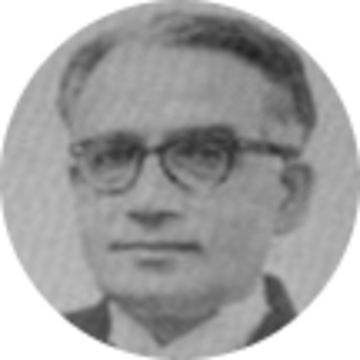Profile
The 13th Chief Justice of India, Justice Sarv Mittra Sikri was born in Lahore on 26th April, 1908 where he also completed his early education. He travelled to London to study medicine. Soon he changed his mind and pursued law at the Trinity College, Cambridge. He was called to the Bar by the Lincoln’s Inn. He began his legal practice in Lahore in the 1930s and joined Mr. Jagannath Agarwal’s chambers. Mr. Agarwal was a leading lawyer in the High Court of Lahore and practiced criminal and civil law.
Sikri J appeared for the State of Punjab before the Das Commission which had inquired about charges against Sardar Pratap Singh Kairon, a former Chief Minister of Punjab. In 1949 he became the Assistant Advocate General of Punjab after which he was appointed as the Advocate General in 1961. In 1964 Justice Sikri became the first lawyer to be appointed directly to the Supreme Court Bench. To this day, only nine lawyers have been directly appointed to the Supreme Court Bench.
In 1971, he replaced Chief Justice Shah.
Justice Sikri was an alternate representative of India to the UN Committee on Codification and Development of International Law. In 1955 he was also a member of the International Law Association Committee on Rivers. In 1958, he also participated in the Law of Sea Conference at Geneva, as an Indian delegate. He also was actively interested in the work of the International Law Association cases (Indian branch).
After his retirement in 1973, he enjoyed the game of golf extensively. He later succumbed to Parkinson’s disease and passed away on 24th September, 1992.
Notable Judgments
In the Vivian Rodrick v. State of West Bengal, Sikri J noted that a delay in disposing death sentence cases by courts is a valid ground for commutation of sentence. He acknowledged that the long-wait of six years caused tremendous mental agony, who lived under constant the fear of a death.
In the landmark case of RC Cooper vs. Union of India, Justice Sikri was a part of the majority opinion delivered by Justice Shah, who stated that a director or shareholder could not move the court for protecting the Fundamental Tights of a company unless it could be proved that the impugned action also violated his rights.
The landmark case of Keshavananda Bharti was heard by a 13-Judge Bench of the Supreme Court. Sikri J, writing for the Majority, held that while Parliament was empowered to amend the Constitution, including the Fundamental Rights chapter, its power to do so was not unlimited. Parliament was barred from amending the ‘Basic Structure’ of the Constitution. This Judgment was delivered by him on the eve of his retirement. Interestingly, some have argued that the impending retirement of Sikri J imposed an ’artificial constraint’ on the hearings in this case. The Court did not want to prolong the hearings, as this would mean that a new Chief Justice would have to hear the matter. Further, some claimed that Sikri J ‘gerrymandered’ a majority by circulating a single-typed sheet on the Bench. This sheet was signed by nine Judges confirming the majority.
Merely a few days after the Court’s decision in Kesavananda, Justice A.N. Ray succeeded Sikri J as CJI. Ray J’s appointment was marred by controversy, as he superseded three senior Judges of the Supreme Court in contravention of the seniority principle.

